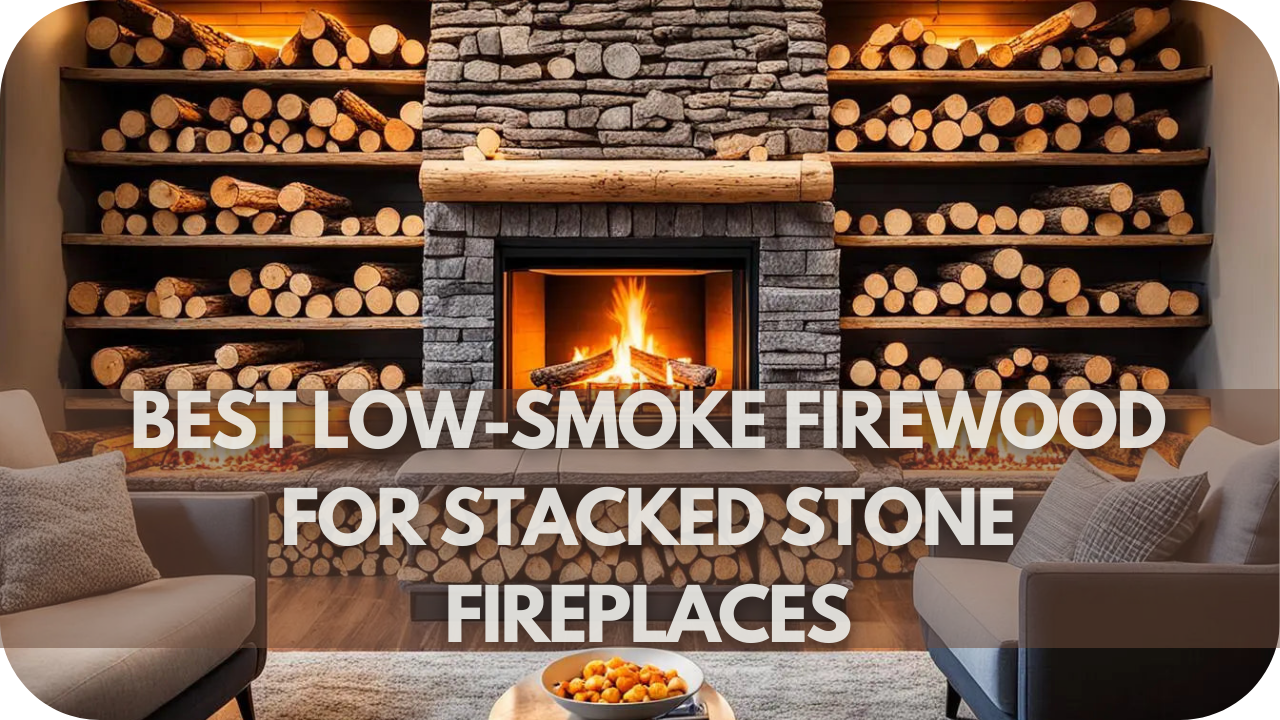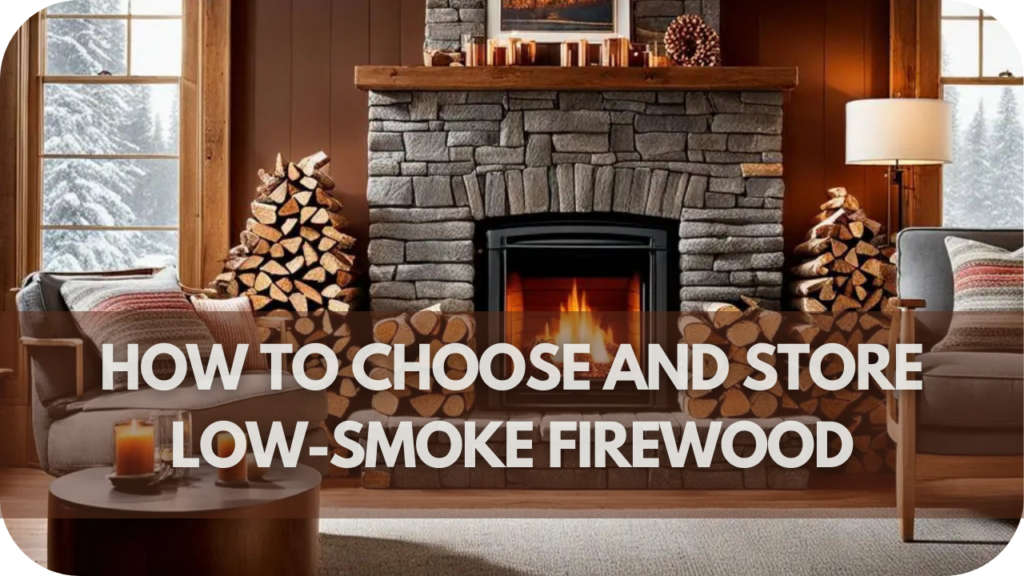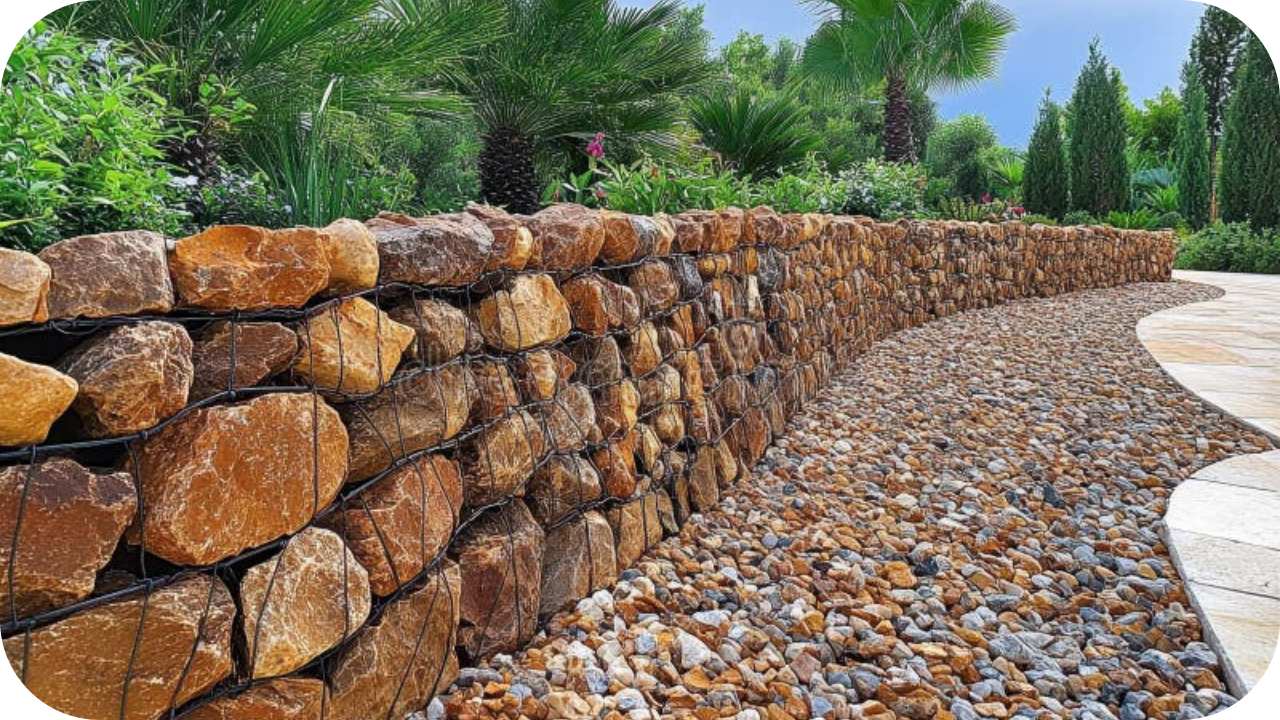
Sitting by my stacked stone fireplace last winter, I noticed something—the flames’ beautiful, rustic charm was overshadowed by irritating smoke filling the room. After trying different logs, I realised not all firewood is created equal.
The wrong choice can turn a cosy evening into a smoky mess. That’s when I began to find the perfect firewood that burns cleanly and leaves the air as crisp as a winter morning. Here’s what I discovered about choosing low-smoke firewood for your fireplace.
Which Firewood Produces the Least Smoke for Stacked Stone Fireplaces?
Hardwoods like oak, ash, and maple are the best firewood for producing the least smoke in stacked stone fireplaces. When properly seasoned, these woods are dense, burn efficiently, and have low moisture content. This results in a cleaner burn with minimal smoke, helping to preserve the aesthetic of your fireplace.
Why Firewood Type Matters for Stacked Stone Fireplaces
The type of firewood you choose significantly impacts the performance and longevity of your stacked stone fireplace. Some woods burn cleaner and produce less smoke, while others create thick plumes that not only disrupt the cosy atmosphere but can also leave unsightly soot on your beautiful stonework.
Certain firewoods, like softwoods, contain high levels of sap and moisture, which can result in excess smoke and residue buildup. This can harm the aesthetic of your fireplace and lead to more frequent cleaning and maintenance.
By choosing the right type of firewood, such as hardwoods with low moisture content, you can ensure a more efficient burn, better heat output, and less smoke. This helps preserve the appearance of your stacked stone fireplace and creates a healthier, more comfortable environment for your home.
Top Types of Firewood That Produce the Least Smoke

Choosing the suitable firewood for your stacked stone fireplace can significantly reduce smoke and maintain the fireplace’s appearance. Here are the top firewood types that produce minimal smoke:
1. Oak
Oak is one of the densest hardwoods, known for its long burn time and minimal smoke production. When properly seasoned, oak burns steadily, releasing little moisture and providing consistent heat without emitting much smoke.
Its slow burn makes it ideal for extended fires, while its low emissions help reduce soot buildup on your fireplace.
2. Ash
Ash is famous for its clean burn and relatively low moisture content, even when not fully seasoned. It lights easily and produces consistent heat with minimal smoke, making it a reliable choice for indoor fireplaces.
The clean burn of ash ensures that your stacked stone fireplace remains free from excessive residue, reducing the need for frequent cleaning.
3. Maple
Due to its high density and low sap content, maple wood burns efficiently and produces very little smoke. It offers a clean burn with steady heat output, making it an excellent choice for homeowners looking for minimal smoke and maintenance.
Maple’s clean-burning properties also help maintain the pristine appearance of your fireplace.
4. Beech
Beechwood is another great option for a smoke-free experience. It burns brightly with a steady flame, generating minimal smoke. Its low sap and high density ensure an efficient burn that produces more heat with fewer emissions.
Beech is perfect for keeping your fireplace clean and creating a warm, inviting atmosphere without the hassle of excess smoke.
5. Hickory
Hickory is known for its strong heat output and long-lasting fire, but it’s also an excellent low-smoke firewood.
Its density allows for a slow, efficient burn that produces minimal smoke, making it ideal for those who want heat and cleanliness. Hickory helps reduce soot buildup in your stacked stone fireplace, keeping it looking its best.
Certain firewoods, like softwoods, contain high levels of sap and moisture, resulting in excess smoke. To delve deeper into how hardwoods and softwoods differ, read our detailed comparison of Hardwood vs Softwood Fireplaces.
How to Choose and Store Low-Smoke Firewood

Choosing and storing firewood correctly is key to minimising smoke in your stacked stone fireplace. Here’s a summary of how to do it:
- Choose Hardwood Over Softwood: Hardwoods like oak, ash, and maple burn cleaner and longer than softwoods, which produce more smoke due to higher resin content.
- Ensure the Wood is Properly Seasoned: Seasoned firewood, dried for at least six months, burns with less smoke. Look for wood with cracks at the ends, which indicates it’s ready to burn.
- Check the Moisture Content: Firewood should have a moisture content of 20% or less for the cleanest burn. You can use a moisture meter to check this before purchasing or burning the wood. The lower the moisture content, the less smoke and creosote buildup you’ll get in your fireplace.
- Store Firewood in a Dry Location: Proper storage is key to maintaining low moisture levels in firewood. Store your firewood in a covered, well-ventilated area, such as a woodshed or under a tarp. Ensure the wood is stacked off the ground to prevent moisture absorption from the soil and keep it exposed to air to allow for continuous drying.
- Stack Firewood Correctly: Stack your firewood loosely to promote airflow, which helps to reduce moisture further. Arrange the logs in a crisscross or row formation, leaving gaps between them to encourage air circulation.
- Rotate Your Firewood Supply: Always burn the oldest firewood first, as it will be the driest. Rotating your firewood ensures that your supply remains seasoned and ready for use. Keeping the most recently cut logs at the back of your stack helps maintain a fresh stock of seasoned wood.
Additional Tips for Reducing Smoke in Stacked Stone Fireplaces
Even with suitable firewood, there are several steps you can take to reduce smoke in your stacked stone fireplace further:
- Clean Your Chimney Regularly: A clogged or dirty chimney restricts airflow, causing smoke to back up into your home. Schedule a professional chimney cleaning at least once a year to ensure proper ventilation and reduce the risk of smoke buildup.
- Use a Fireplace Grate: A grate lifts the firewood off the fireplace floor, allowing better airflow under the wood. This helps the fire burn more efficiently and reduces the amount of smoke produced.
- Open the Damper Fully: Ensure the damper is fully open before lighting your fire. This allows smoke to escape easily through the chimney, preventing it from lingering inside the room.
- Avoid Burning Wet or Green Wood: Always burn dry, seasoned firewood. Wet or green wood contains moisture that creates steam, leading to excessive smoke and creosote buildup in your chimney.
- Start Fires with Smaller, Dry Kindling: To get the fire going quickly, begin with small pieces of dry wood or kindling. Once the fire is burning well, gradually add larger logs. A fast, hot start ensures less smoke.
- Ensure Proper Airflow in the Room: Make sure the room where your fireplace is located is well-ventilated. Poor airflow can cause the fire to smoulder and produce more smoke. Opening a window slightly can improve airflow, helping the fire burn cleaner.
- Use Fire Starters Wisely: Avoid using paper or cardboard to start fires, as these materials can create more smoke. Instead, opt for fire starters specifically designed for clean burning.
Conclusion
Choosing suitable firewood can transform your stacked stone fireplace from a smoky nuisance into a cosy retreat. Hardwoods like oak and ash will give you a clean, smoke-free experience.
Ready to elevate your fireplace game? Visit Splendour in Stone and find how we can help you create the perfect hearth for your home!
More To Explore

8 Advantages of Using Stone Grid Gabions in Your Landscape
Are you seeking a durable, cost-effective solution to elevate your landscape? Stone grid gabions might be the perfect choice! These versatile, eco-friendly structures offer a

10 Stunning Feature Wall Ideas Using Natural Stone
Looking to elevate your home with a stunning feature wall? Natural stone offers a timeless, elegant touch that can transform any room. From sleek marble


